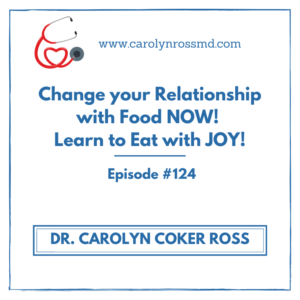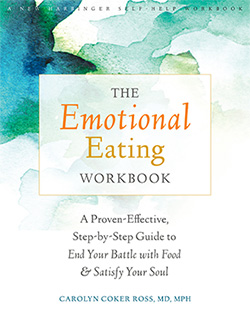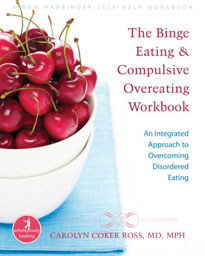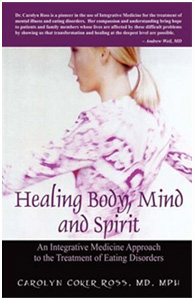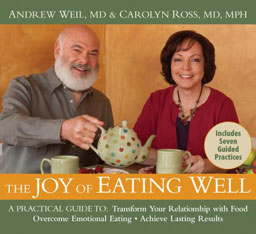You may have dieting whiplash and just frankly have so much misinformation that you really don’t know what is good for your body and what is not. So you end up eating lots of raw carrots and celery or stick mainly to salads. While there may be kernels of truth in expert nutritional advice, nutritional confusion also contributes to unhealthy eating styles. Joyful eating is about determining what works for you and your body, and learning to eat those foods with joy and without guilt or fear.
In this podcast, you will learn:
1. What is joyful eating?
2. How can joyful eating help me with binge eating, food addiction and emotional eating?
3. What you can do to learn to eat with JOY?
HOMEWORK
1. Select one behavior you can change to make the experience of eating more joyful. Pick something you would love to do—not something that you feel you have to do or that is a burden. This is meant to be joyful, not dutiful! Approach this with an air of self-discovery. Ask yourself, What would make me happy?
2. Keep an ongoing list of food experiences you’ve really enjoyed and what it was about the experience that was joyful. It may have been a meal in which you tried a new food and found it fantastic. It may have been the company you were with or the beauty of the food presentation. This is a way for you to learn what it means to eat with joy. It is also a call to mindfulness—in other words, being mindful of not just what you are eating but how you feel about what you are eating. Make this your diary of joyful eating.
Don’t miss the upcoming Anchor Program. Schedule a free consult to discuss your food and body image issues: https://findingyouranchor.as.me/consult
Get a free copy of The Food Addiction Recovery Workbook” (I pay for the book, you pay for postage/ handling) foodaddictionrecoveryworkbook.com
Use this link to get your free e-book of “The Food Addiction Recovery Workbook.” (you pay for handling charge only),
https://www.foodaddictionrecoveryworkbook.com/ebook
I hope wherever you are you’re enjoying the day. We have been in the grip of a bunch of storms here in Southern California. And today is finally giving us a little bit of sunshine, and I went to the gym to work out my sorely damaged arthritic knee. I don’t think I’ve mentioned that one of the things I’m struggling with right now, knee pain, and I know many of you who are in our older years are having the same problem, but I went swimming today and I worked out on the bike, and I feel really good about that. Wherever you are. I hope you’re doing something fun or doing something to take care of yourself.
So let’s get started talking about how to change your relationship with food. And podcasts that I’ve done in the past I’ve discussed how to work through the five levels to heal from food addiction, binge eating and emotional eating. And the five levels are: number one, the level of stopping surface behaviors like binging, food obsessions, emotional eating, stress eating. Those are the surface behaviors. Number two level is about emerging from the emotional soup, where emotions can trigger binges and other behaviors that we don’t wanna keep doing. But we have no other way of managing our emotions. Number three level is embracing the wisdom of your body, and to some degree, we’re gonna be talking a lot about that today. And then the fourth level is creating new core beliefs or guiding principles. We’ve talked about in the past how core beliefs come from our childhood experiences of survival or trauma, survival from trauma and we form these beliefs because we don’t understand why something’s happening in our lives. And the beliefs can be very negative and can fuel some of the behaviors. So beliefs like, I’m not good enough, I’m unlovable, I’m not worthy, I’m weak. All of those beliefs can be changed, but you first have to identify them and connect them to your emotions and your surface behaviors. And the fifth level is the deepest level of all, and that’s about finding soul satisfaction. So when I say finding soul satisfaction, I’m really talking about living more authentically. You know, many times things happen to us and it takes us off of our rightful path where we should be living from an authentic place. But instead we may be living from our survivors self and just be on kind of repeat, you know, we have behaviors, we have these negative belief and everything in our world kind of just triggers those things. So when you get to the fifth level where you’re really living from an authentic place, from soul satisfaction, then that is what flips the switch on your beliefs, on how you manage your emotions and on your ability to stop your behaviors.
Now, much of the work that I’m mentioning, taking you through the five levels, which is in all of the books that I’ve written. Much of this work can be very emotional, but it is a necessary part of how to heal from binge eating, food addiction, and emotional eating. And that is because we really need to remove blocks from the past and shift the place from which we approach our desire to change your relationship with food and with your body. From that of the wounded or survivor’s self to authentic or true self. So just let me give you an example. Just think of as much effort as you can to wanna change your relationship with food to stop your unwanted behaviors and so on. But in the background, you still have the belief that you’re not good enough. How do you think that’s gonna go if everything you try comes from the place of, I’m not good enough. So we really need to work on all of these different levels for it to come together and shift us towards our authentic or true self.
So when you desire or you when you wanna ship that relationship with food in your body, when that is from a deeper, more authentic part of yourself, you’ll notice that everything lines up. It comes into alignment. Your behaviors, your thoughts, your choices, your emotions, and your core beliefs. This alignment will help you to be more aware of your choices and make choices based on what your body’s wisdom and trust those choices instead of doing what other people tell you to do, even if they’re considered experts. So most importantly, this shift helps you to make more permanent lifestyle change as opposed to just following those fad diets or the flash in the pan programs that may work for a short time, but they’re only temporary.
So the next thing is it’s important to learn how to practice this new way of life. You know, when I work with people in the Anchor Program, they get so excited, as do I about having great insights. But one thing I always say is that insight never changes behavior. You really have to do the down and dirty work of practicing new behaviors, new thought processes, practicing, getting out of the cycles, the patterns that you’ve been in for most of your life. And that’s just takes a lot of practice to live from soul satisfaction rather than living from focusing on the number on the scale.
So wouldn’t it be great if you no longer felt upset when you looked at that number on the scale or you looked in the mirror, but instead you could feel empowered knowing that you’re on your own personal path? That path is designed with just you and mine, and it is unique to fit your needs without crashing your dreams.
Wouldn’t it be fantastic to be able to enjoy food again without fear or worry that you are “eating the wrong thing” or that you have to pay in some way for eating foods you like, for example, have to over exercise if you eat something you really enjoy. What would change in your life if you felt comfortable in your body and confident about your appearance? Because you knew on the deepest level that you are a worthwhile human being who deserves all that life has to offer, including deserving, joyful eating.
So that’s what I wanna talk to you about today, that changing your relationship with food, that is a transformational process. But first, let me tell you about one of my patients from the anchor program. So Cindy grew up in a home where she just didn’t feel like she fit in. She was very bright and good in school even though no one else in her family valued education. She was also really sensitive emotionally. Whereas her other family members didn’t seem to have any emotions at all. So she felt like an outsider. And this was the beginning of her pattern of dieting, Yo-yo dieting. By the time she was in her thirties, she had been on multiple diet. When she started the anchor program, she had also had a failed gastric bypass surgery. And she was dissatisfied with her body and her relationship with food. Her biggest hurdle was diet thinking and her aversion to eating vegetables, how Cindy craves sweets and binged on candy and baked goods whenever she had any uncomfortable emotions. But she didn’t even notice that these behaviors were triggered by emotions. But after being in the anchor program, she began to feel good about herself and her body for the first time in as long as she could remember, eating more protein helped curb her sugar cravings as did understanding that sugar cravings were her response to stress. She learned new skills for coping with stress and reduced her reliance on food for stress management. And amazingly, she couldn’t believe that instead of craving chocolate, she was craving vegetables. That actually made her kind of mad at me she said. What Cindy really was learning was the joy of eating well.
The joy of eating well is not just about what you eat, it’s uh, also about whether you enjoy what you eat, which is the most important thing. Joyful eating calls you to develop your palate in return to a more mindful focus on food silencing once and for all the critics and experts who tell you what to eat, what not to eat, etc. The joy of eating well restores your individual taste and body wisdom to its rightful role as the in-house expert that will guide you in developing a healthy relationship with food. So individual taste, have you thought about that lately? Like some of us like spicy foods, some of us don’t. Some of us like eating more meat. Some of us prefer to have a vegetarian diet or a vegan diet. We’re talking about just your innate taste, what your body wants, not what someone tells you you should do. So joyful eating is about determining what works for you and your body and learning to eat those foods with joy and without guilt or fear. A substance of joyful eating is not about the food. It may be difficult at first for you to find what I call a, like a childlike curiosity about food and the willingness to put behind you the food rules of the past and start fresh. So childlike curiosity, oh, let me try this. Oh, how does this taste? How does it feel in my body? Well, maybe I’d really rather eat this. Let me try that. So it’s all about that curiosity and experimentation. And it’s a process that will take time and at times it may, it may make you feel like you’ve landed on a different planet where the inhabitants don’t focus all their energy on trying to change their appearance or their size, and where the conversations around food make people happy and carefree instead of anxious and sad.
I don’t know if you’ve had an experience similar to this. When I’ve traveled abroad, I remember my first trip to Italy and how surprised I was to find that eating dinner could be a two hour experience with everyone sharing different foods, freely, enjoying each other’s company, and commenting on the taste of what they were eating. It was a real eye-opener for me, and I’ve had similar experiences in many of the other countries that I visited.
So eating with joy entails finding an eating style that is right for you, and it’s about listening to your body, not listening just to the hunger cues or knowing when you’re full, obviously that’s important. But I always say that your body has all the wisdom you need to run your life really. But particularly to help you understand what you want to eat, what the body needs to eat, how much when to eat, etc. Perhaps the most important aspect of joyful eating is allowing your body to use all of its senses to truly savor the food and the experience of eating. I just think about some of the pictures you see on social media of, you know, a one-year-old or a two-year-old who has a birthday cake and is them waiting for someone to cut a piece of cake for them. They just put their whole fist in the cake and just grab a fistful of cake, put it in their mouth, smear it all over their face and so on. I’m not saying you have to go that far, but that really epitomizes, you know, joyful eating and curiosity.
You savor your food by paying attention to what you’re eating and how it feels in your mouth and in your body. So just like we talked about, do you like the taste of spicy? Do you like certain flavors like savory, sweet, salty, rich foods, bowl flavors? You have to pay attention also to the environment. Do you enjoy eating with certain people and not so much with other people? How about the ambiance of certain restaurants, or maybe you wanna set up your own ambiance at home with candles and place mats. Do you like trying new foods, ethnic cuisines, unexpected flavor? So all of those are open to you if you become a joyful eater. So how do you do that? Well, if you’ve been a chronic dieter most of your life and you’ve lived by food rules, either from childhood, from your family, or from the things you’ve learned in diet culture. It can leave you really confused about what to eat, and you may not be aware of how to listen to your body, and you may not even notice regularly when you’re hungry. This can lead to you skipping meals so your body doesn’t trust you to feed it and it doesn’t get into a particular rhythm around eating. Or you may have learned to shut out or ignore body cues of hunger if you have the eating style where you snack all day long but don’t eat regular meals your body may not ever get the chance to send you a hunger signal. So you really have to be patient with yourself and your connection to your body. And as you become more proficient at listening to what your body is trying to tell you, you can take it to the next level of joyful eating, which is not just about body cues, as I said, but about learning to eat for satisfaction.
So the next step is to start tasting the food you eat and noticing when you enjoy eating certain foods and how they feel in your body. And that’s all about satisfaction. I think you all know that satisfaction is different from being satiated or full. You may feel as if you like, you may eat something and you’re full, but you’re not satisfied. Why is that? Well, it’s because you’re not giving your body what it needs. So if you eat what I call rabbit food or diet food, or compelled to eat foods that you don’t really want, you’re never gonna be satisfied, and that can leave you to over eating. So even when you’re full, you have still the desire to eat because you’re not satisfied. So you may have incredible and surprising insights just as Cindy did, that you actually crave vegetables. You’ll never know unless you leave behind all those preconceived notions from the past and venture into the foreign land that is joyful eating.
So I would encourage you to journal about your food rules. I would journal also about foods you think you should or shouldn’t eat, or foods you think you don’t like or do like, and just test those beliefs to see if they’re really true or if they are part of diet thinking or family food rules or they are part of diet thinking or family food rules
So while you have probably, I always think that my patients in the anchor program know much more than I do about counting calories and food, carbohydrate grams and all of that. I don’t think that’s the most important thing. While they’re may be some truth in what the experts tell you, there’s also just a lot of confusion that contributes to unhealthy eating style. And sometimes it can lead you to have dieting whiplash and just have too much misinformation that you really end up not knowing what is good and what isn’t. So you end up sticking to kind of a rigid program of eating things that are you feel are on your good list. Well, the good news is that you have all the know-how you need to develop a healthy relationship with food by using your body’s wisdom.
And instead of spending more money on diets, get a piggy bank and pay your own self some money for following your body’s own wisdom about when to eat, what to eat, and how much to eat. I mean, you could fund your next vacation trip with some of that, right? Then take a deep breath throughout all those diet books, and I know many of you are still buying those books and going online and paying for those diets and start to think about how it will feel to be free of all those confusing recommendations and of the fear and guilt you may experience around food now.
So eating with joy and satisfaction is an experience, it’s not a to-do list. You know, some restaurants offer tasting menus and I, I think that’s a good model for someone who’s trying to learn the joy of eating well. It’s just to start tasting different foods. You don’t have to eat the whole thing if you don’t like it, but just tasting to find out what tastes good in your mouth. So it’s an experience, not a to-do list, and it’s about being in the moment with your food no matter what it is you’re eating. And it also involves suspending judgments that you have about, you know, these foods are good foods, these foods are bad foods like Cindy did.
Joyful eating is not about the past it’s about starting fresh. And being present with the body you have today and what that body needs in order to be functional and happy.
Now, here’s some steps you can use to immerse yourself in joyful and satisfied eating: Number one, provides structure to your eating plan. Whatever you know works best for you. So some of my patients in the Anchor Program say, well, I know that prepping my food for the week really works for me. If that works for you, do that for me. One of the things that works for me is I have some frozen foods. I usually love the Amy’s cuz I’m dairy free because I’m really allergic to dairy. I love the Amy frozen meals, and so at lunchtime when I’m really busy between patients or having to do a group for the anchor program, I just will pop those in. Now that works for me. It may not work for you, but find out that structure that works for you.
Number two, begin to pay attention to your body’s communications. What it’s trying to say to you about hunger, fullness and taste, and the effect of, you know, foods you’re eating, like you may eat something that you think is good for you, and then find out your belly gets all bloated. You have to ask yourself, huh, what caused that? Do I wanna do that again? and then also use your body wisdom to try to distinguish between what is an emotional need for food versus a body wisdom based need. How do you do that? Well, emotional hunger usually is not easily satisfied, whereas body wisdom based hunger is. So just pay attention and again, experiment.
Number three, stay aware of old food rules from your family or your culture and decide which ones fit for you and which you want to discard.
Number four, taste your food. Don’t just shove it in your mouth. Savor the flavors. See if you can identify spices and flavors used in the dishes you like. Try to categorize what you like about different foods.
Number five, ask yourself before you eat, what could I eat that would make my body happy? Try the food you think will make you and your body feel good. And see if you’re right. If so, pat yourself on the back. If not, chalk it up to experience and keep on experimenting.
As you know, trying to do everything all at once only leads to frustration, but not doing anything at all only leads to despair. In the Anchor Program, our approach to joyful eating has helped many people just like you change their relationship with food and their body. And if they can do it, you can too.
So I encourage you this year, start the new year, cherishing yourself and your body and learning to work with it, not against it. I will leave some homework in the show notes for you. I encourage you to journal about your relationship with food, using some of the things I’ve talked about in this podcast, and just keep a record of your discoveries so you can look back and see how far you’ve come.
Thank you for listening, and I’ll see you next time.


